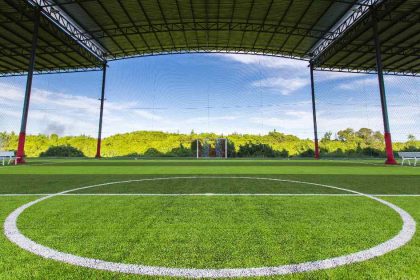A new study has revealed that Australian public school students are learning in classrooms with higher student-to-teacher ratios than children in private educational institutions, sparking renewed calls to address overworked teachers.
The data, released by the Australian Curriculum, Assessment and Reporting Authority (Acara), found the full-time equivalent student-teacher ratio is 12.8 for private schools and 13.6 for public schools nationally.
The gap is most evident in secondary education, where there are 12.4 students for each teacher at government schools, compared with just 10.5 students at independent institutions and 12.2 at Catholic schools.
At Australian public primary schools, there are 14.4 students for each teacher, compared with 14 at independent schools and 15.4 at Catholic schools.
The student-teacher ratio gap between independent and public education has remained stubborn for more than a decade, with public teachers consistently teaching around two students a class more than independent educators.
Which states fared the worst
There were glaring differences across the board, with NSW data exposing the stark staffing divide between public and private schools, while a comparison of the Queensland and Victorian data showed children in one state were far better off.
NSW Teachers Federation president Angelo Gavrielatos said the true ratio was even worse with the teacher shortages affecting schools across NSW.
“There is a classroom crisis in NSW,” he said. “The number of students per teacher is above what it was (14.1) in 2011 when the Coalition took office in NSW, and since that point, we have had significant increases in the number of students with higher needs in public schools.”
Instead of investing in teachers, Mr Gavrielatos pointed to falling teacher numbers, “the worst student/teacher ratio in the country” and what he described as widespread teacher shortages.
“Teachers report that merged and minimally supervised classes are a daily occurrence,” he said.
Mr Gavrielatos said that, without urgent intervention, the situation would continue to deteriorate. “Two-thirds of teachers say they are burnt out, and 60 per cent say they plan to leave teaching within the next five years.”
Across the rest of the country, WA schools come in second place behind NSW with an overall ratio of 14.1. SA and QLD followed closely, with 13.4 and 13.2, respectively.
What is a healthy student-to-teacher ratio?
Although the two statistics are frequently related, the student-teacher ratio refers to more than just class size. The number more accurately reflects the workload of the teachers and their accessibility to provide services and care to their students.
While Education Australia only has a classroom limit of 50 students for every 1 teacher, research confirms that smaller ratios correlate with higher test scores, increased graduation rates, and improved academic performance.
The impact of student-to-teacher ratio on student success
A low student-teacher ratio has been proven to foster a class environment where educators can engage students more effectively, provide personalised guidance, and cater to various learning styles.
An American study by Method Modern Public Schools found that when lowering their classes to only eight students per teacher, students experienced:
- An annual average academic growth per student: 1.3 years
- Greater levels of comfort to ask questions and seek the help they need
- Teachers who were more effective and confident in addressing student’s needs
- Improved overall school culture of personalisation and success
When not overwhelmed by large class sizes, teachers focused their energy on identifying individual learning styles, adapting teaching strategies, and providing targeted support.
But it’s not just students who benefit from smaller class sizes – lower student-teacher ratios benefit teachers, too.
According to a 2021 research paper, lowering the student-to-teacher ratio in Japanese classrooms significantly lightened the workload for overworked teachers. A reduction of 2.5 hours per work in administrative work meant teachers could enjoy a stronger student-teacher relationship and become more deeply involved in the learning process – something that had a direct impact on increased job satisfaction.
Can online learning solve rising student-to-teacher ratios?
While the ratio data can give a great indication of what happens within the walls of the classroom, the leaps and bounds made in online learning infrastructure over the last decade has also played a significant part in making that number obsolete.
The rise of massive open online courses (MOOC) is an ideal example. Without being limited by physical space, these dedicated online courses put the nation’s best educators in front of hundreds of students simultaneously – often free of charge.
With a recorded 220 million learners in the last decade, 3100 higher education courses and 500 micro-credentials, MOOCs have proven that, with the right resources, students can succeed in larger class-size settings.
The downside – these online classes are subject-specific and are yet to be implemented effectively in Australian K-12 education. While well-suited to content-heavy subjects where lectures and textbooks reign supreme, conceptually heavy classes that call for one-on-one teacher interactions currently struggle with the format.
In a 2015 investigation into using MOOCs for K-12 education, it was also found that young students failed to engage with purely online material. The self-driven nature of online learning was cited as the main culprit, with results revealing that, without the insight and guidance of face-to-face teaching, students lacked deep comprehension of course subjects.
Despite COVID-19 lockdowns pushing the advancement for online learning in primary and secondary schooling, much work still remains to be done to provide a completely virtual learning K-12 environment that matches the positive interactions and improved learning outcomes of the face-to-face teaching environment.







